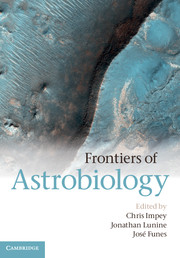Book contents
- Frontmatter
- Contents
- List of contributors
- Part I Introduction
- Part II Origin of Planets and Life
- 2 Towards a Theory of Life
- 3 Terran Metabolism
- 4 Planet Formation
- Part III History of Life on Earth
- Part IV Habitability of the Solar System
- Part V Exoplanets and Life in the Galaxy
- Index
- Plate Section
- References
2 - Towards a Theory of Life
from Part II - Origin of Planets and Life
Published online by Cambridge University Press: 05 December 2012
- Frontmatter
- Contents
- List of contributors
- Part I Introduction
- Part II Origin of Planets and Life
- 2 Towards a Theory of Life
- 3 Terran Metabolism
- 4 Planet Formation
- Part III History of Life on Earth
- Part IV Habitability of the Solar System
- Part V Exoplanets and Life in the Galaxy
- Index
- Plate Section
- References
Summary
Introduction
What is this thing called “life” that seems to interest everyone? And why are we looking for it so hard? Why, for example, are we seeking “Earth-like planets” in “habitable zones,” or the spectroscopic signatures of amino acids and carbohydrates in the interstellar dust? Why not just accept the perspective of Dr. Manhattan from The Watchmen: most of the universe appears uninhabitable, yet seems to get along quite well.
Certainly, it is easy to understand the motivation of SETI astronomers who seek intelligent life. They seek someone to talk to, someone who can teach us something, if it does not consume us, or destabilize our society with technological wizardry. If we physically encounter life of the type that SETI seeks, we will almost certainly recognize it as life. SETI-style life will have the attributes that we most value in life, whether it explains the secrets of dark matter or simply applies 40 of us to a recipe for Rigelian stew. But the higher probability seems now that we will not find anything so complex. The life that we seem most likely to encounter will be “primitive,” single-celled organisms visible only under the microscope. And the life that we now seem most likely to encounter will be detectable only by its chemical signatures, no longer able to grow after its first encounter with us.
- Type
- Chapter
- Information
- Frontiers of Astrobiology , pp. 25 - 47Publisher: Cambridge University PressPrint publication year: 2012
References
- 3
- Cited by



